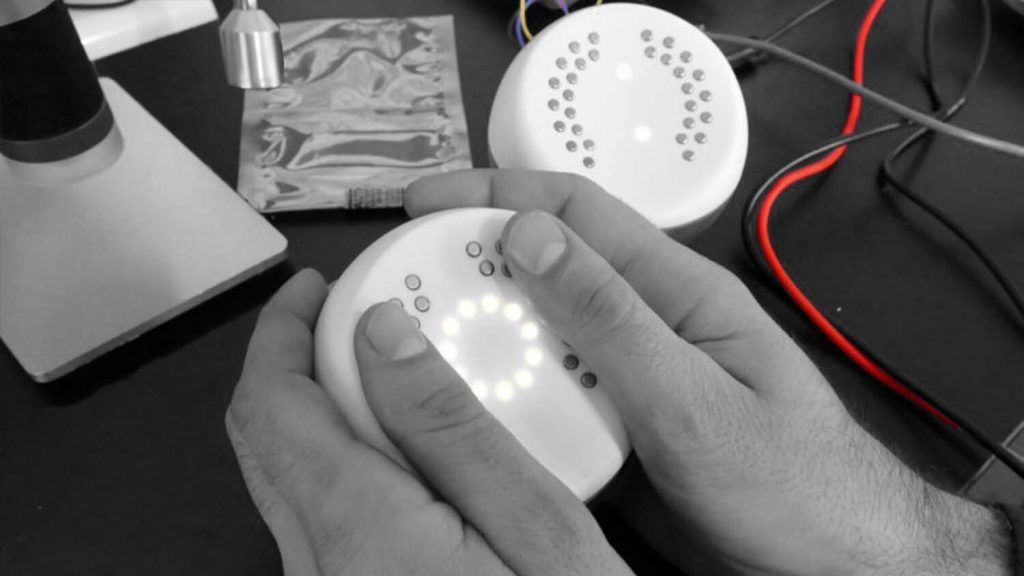Given the clear correlation between economic prosperity and an increased focus on aesthetics, it might be smart to start using the work of industrial designers as a reliable economic indicator, writes Erin McDermott
Could industrial designers and the like be low-key economic fortune tellers? I think so – and there’s evidence to support my view, not just today but also throughout history!
After working for many years as an employee for manufacturing companies, I came to expect that decision-makers would choose the lowest possible cost over aesthetic beauty.
When the product was a consumer electronic, there was a little less whiteknuckling of the purse strings, but this trend was still apparent. Interpreting these priorities as an optical engineer, I was pushed to always prioritise function over form in my optical designs.
However, in the five years since I left corporate life, things have changed. For one thing, there’s been an explosion of consumer electronics.
We stick connected gadgets everywhere we can now – our wrists, helmets, baby monitors and even on our dogs. In itself, I believe the ubiquity of these luxuries is an indicator of robust economic health.
Yet, beyond the sheer number of these lavish goods is another important economic indicator: the way they look. To stand out from the competition, manufacturers are bumping product appearance way up their list of priorities.
As a freelance engineer, I’ve been shocked in recent years to learn what companies are willing to pay for. I can easily secure the same rate to polish up a whimsical lit effect as to get an automotive headlamp to meet strict photometric regulations in multiple regions of the world simultaneously.
An example of the type of appearance now worthy of top R&D coin would be something like the colourful lit ring on the Amazon Echo. (Although, no, I didn’t design that specific optic.)
In talking with all the hardware startups and industrial designers I meet on my travels, I noticed this trend extends to the general exterior form, too.
Adding gentle, ergonomic curves and embellishments to products, or even incorporating difficult-to-work-with materials like natural wood, are not just on the table – they’re imperative.
A great example of this is Core’s meditation training device. The company’s over-ambitious engineering team decided to take on the task of using real wood in this mass-produced design. And somehow, they actually made it work.

My company had the privilege of helping out with part of this extremely detailed product, which went on to be featured at CES 2020 in Las Vegas.
However, if my theory that beautification trends are tied to economic prosperity is to hold water, we should be able to see it in different situations and time periods.
I searched my brain for other common examples. I wasn’t long on this thought train before I arrived in Dresden, Germany.
Many years ago, a German friend of mine took me there and I was amazed at the stark contrast between the vibrant and ornate older architecture and a Plattenbau – a bleak, grey pile of concrete slabs slapped together to create a public housing building. These were built during times of economic scarcity and are glaring reminders of when Dresden and other cities belonged to the Eastern Bloc.
If we jump back on the thought train to the Renaissance period, we see the correlation between design and prosperity still holds. During this time, the economic boom stemming from accelerated trade, among other things, inflated the amount of play money floating around in society. From that, of course, comes the stunning, commissioned fine art, music and architecture that this age is known for.
Well, I for one am convinced of my own theory. So, will you industrial designers, mechanical and electrical engineers involved with aesthetic choices keep me in the loop?
If you continue to work on beautiful, overly complex product designs that make you want to pull your hair out, I think the chances are high that the future will be bright.

Get in touch: Erin M McDermott is Director of Optical Engineering at Spire Starter and a digital nomad (read: vagrant). She travels the world, meeting hardware engineers who don’t know that things using light (cameras, LED illumination, LiDAR, laser processes etc) need competent design, optimisation and tolerancing like the rest of their widget.
Get in touch at spirestarter.com or @erinmmcdermott






